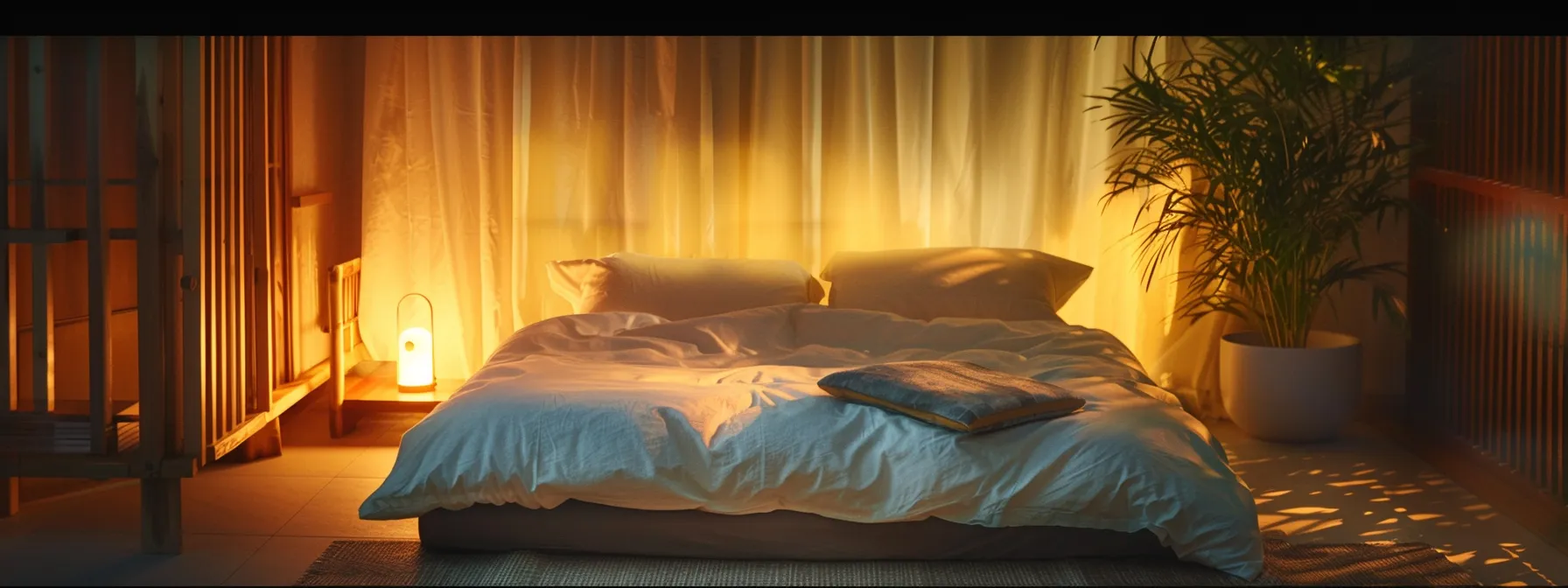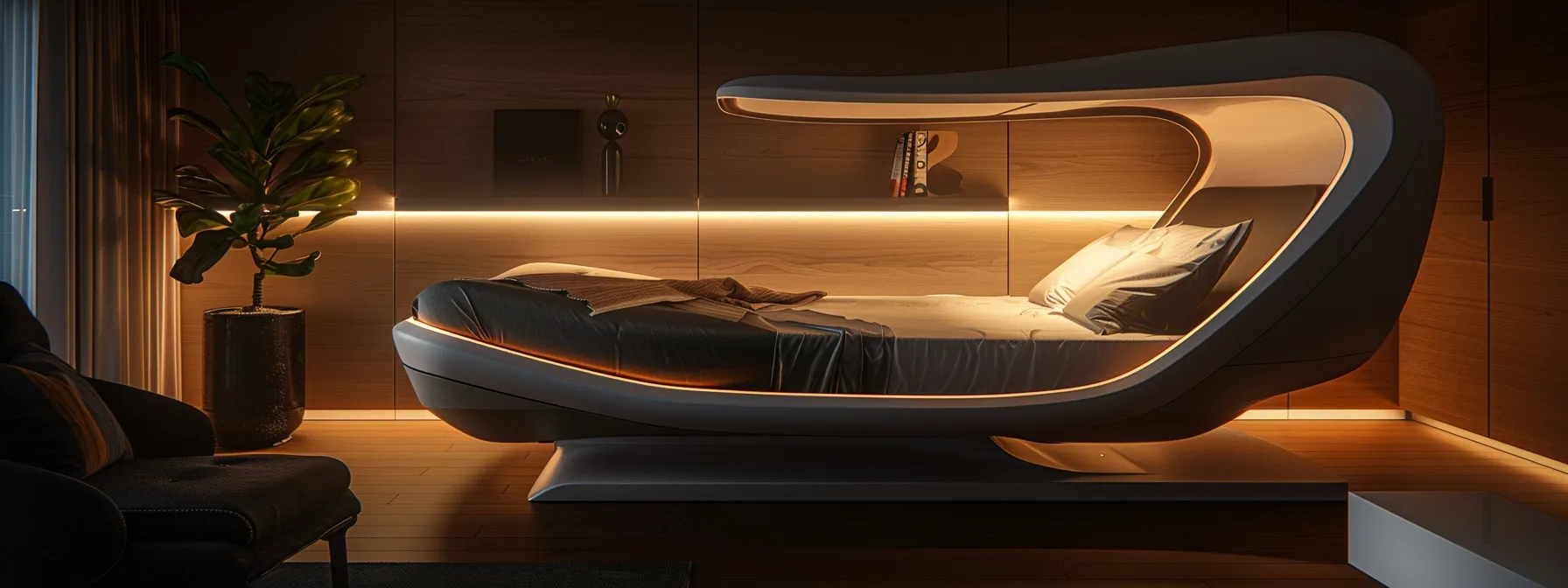Sleep apnea can significantly impact your quality of life, but there’s hope for those struggling in Burlington, CT. Positional therapy offers a simple yet effective approach to managing this condition. This article explores practical techniques for implementing positional therapy, its benefits, and how to collaborate with healthcare professionals. You’ll learn about complementary lifestyle changes and hear success stories from local residents. By the end, you’ll have actionable strategies to improve your sleep and overall well-being.
Key Takeaways
- Positional therapy is a non-invasive approach to managing sleep apnea by optimizing sleep positions
- Side sleeping and elevated head positions can reduce apnea episodes and improve sleep quality
- Regular monitoring and adjustments are crucial for the success of positional therapy
- Collaborating with healthcare professionals ensures comprehensive care for sleep apnea management
- Lifestyle changes, such as weight management and avoiding alcohol, can enhance positional therapy’s effectiveness
Understanding Positional Therapy for Sleep Apnea
Positional therapy offers a non-invasive approach to managing sleep apnea, focusing on sleep positions that can alleviate symptoms. This section explores how specific positions affect breathing during sleep, which positions to avoid, and recommended sleep postures for better rest. Understanding these techniques can lead to improved patient satisfaction and overall sleep quality. To learn more or to request appointment, much like how proper tooth whitening education enhances dental care outcomes.
What Is Positional Therapy?
Positional therapy is a non-invasive treatment approach for sleep apnea that focuses on optimizing sleep positions to improve breathing and oxygen levels during rest. This technique aims to reduce the occurrence of apnea events by encouraging patients to sleep in positions that keep their airways open. By addressing the root cause of breathing difficulties, positional therapy can help alleviate insomnia and enhance overall sleep quality. Dental public health professionals often recommend this method as part of a comprehensive sleep management plan, recognizing its potential to improve patients’ sleep experiences without invasive interventions. Patients can request appointment with Dr. Brenner to discuss positional therapy as part of their sleep management plan.
How Does Positional Therapy Work for Sleep Apnea?
Positional therapy works by encouraging patients to sleep in positions that minimize airway obstruction, reducing the frequency of apnea events and fatigue. By using specialized devices or techniques, individuals can maintain optimal sleep postures that keep their airways open, similar to how clear aligners guide teeth into proper alignment.
This approach, often recommended by dental assistants and endodontists, helps patients achieve the highest quality of rest without invasive treatments. The effectiveness of positional therapy varies among individuals, but many find it a valuable tool in managing their sleep apnea symptoms.
Why Position Matters in Sleep Apnea Management
Sleep position plays a crucial role in managing sleep apnea, as it directly affects the family’s overall health and dental care. When individuals sleep on their backs, gravity can cause the tongue and soft tissues in the mouth to collapse, obstructing the airway. This obstruction leads to breathing difficulties and disrupted sleep patterns.
By adopting specific sleep positions, such as side sleeping, patients can reduce the frequency and severity of apnea episodes, improving their sleep quality without the need for sedation. Understanding the impact of sleep position empowers individuals to take an active role in their sleep apnea management, complementing other dental treatments for better overall health.
Common Positions to Avoid During Sleep
When managing sleep apnea, certain sleep positions can increase the risk of airway obstruction. The Academy of General Dentistry recommends avoiding back sleeping, as it can cause the tongue and soft tissues to collapse, blocking the airway.
A general dentist or physician may advise patients to use positioning devices to prevent rolling onto their backs during sleep or request appointment for further assistance. Proper sleep hygiene also includes avoiding stomach sleeping, which can strain the neck and potentially worsen apnea symptoms.
Recommended Sleep Positions for Alleviating Symptoms
Dr. Brenner may recommend side sleeping as an effective position for managing sleep apnea symptoms. This position helps keep the airway open, reducing the risk of obstruction and associated pain. For those with dental implants or recovering from tooth procedures, sleeping on the side can also minimize pressure on the jaw. Patients can enhance their smile and overall oral health by combining proper sleep positioning with regular dental care.
Benefits of Positional Therapy

Positional therapy offers several benefits for sleep apnea management in Burlington, CT. This approach improves sleep quality, reduces snoring, and decreases reliance on CPAP machines. It also enhances oxygen levels during rest and provides a cost-effective solution for many patients.
These advantages align with family dentistry’s focus on overall health, addressing issues that can affect dental surgery outcomes and patient mood. By optimizing tongue position during sleep, positional therapy supports comprehensive dental care.
Improved Sleep Quality and Reduced Snoring
Positional therapy can significantly enhance sleep quality and reduce snoring for those with sleep apnea in Burlington, CT. By encouraging optimal sleeping positions, patients often experience fewer interruptions during rest, leading to more restorative sleep.
This approach, recommended by experts at the University of Connecticut and Smile Haven Dental, can complement positive airway pressure treatments. Improved sleep quality through positional therapy may also help regulate blood pressure and enhance overall health, making it a valuable addition to sleep medicine protocols.
Decreased Dependence on CPAP Machines
Positional therapy offers an alternative to CPAP machines for many sleep apnea patients in Burlington, CT. By adopting optimal sleep positions, individuals may reduce their reliance on CPAP devices, leading to increased comfort and compliance. It is often recommend as part of a comprehensive treatment plan, combining alternative medicine with traditional sleep apnea management techniques. This community-focused strategy empowers patients to take control of their sleep health:
- Reduced CPAP usage frequency
- Improved patient comfort during sleep
- Enhanced treatment compliance
- Integration of alternative medicine approaches
- Personalized care plans for Burlington residents
Enhanced Oxygen Levels During Sleep
Positional therapy can significantly enhance oxygen levels during sleep for patients with sleep apnea in Burlington, CT. By optimizing sleep positions, individuals may experience improved airflow and reduced breathing obstructions, leading to better oxygenation throughout the night.
This benefit extends beyond sleep quality, potentially impacting overall health and dental care outcomes. Patients often report feeling more refreshed after implementing positional therapy, which can complement other treatments like teeth whitening, orthodontics, and prosthodontics by promoting better oral health through improved sleep.
Implementing Positional Therapy Techniques

Implementing positional therapy techniques can significantly improve sleep quality for those with sleep apnea. This section explores choosing supportive pillows and cushions, utilizing positional devices, practicing effective techniques, and monitoring progress. By addressing factors like gum health and pressure points, patients can enhance their sleep experience. These methods, backed by positive ratings, offer practical solutions within miles of Burlington, CT, without the need for costly advertisements.
Choosing Supportive Pillows and Cushions
Selecting the right pillows and cushions plays a crucial role in effective positional therapy for sleep apnea patients in Burlington, CT. Supportive pillows designed for side sleeping can help maintain proper alignment of the spine and neck, reducing pressure on the airways and promoting better sleep quality.
Patients may find additional comfort from specialized cushions that accommodate their specific needs. Pediatric dentistry experts often recommend age-appropriate pillows to ensure children with sleep apnea receive adequate support, while also considering factors like blood flow and overall comfort throughout the night.
Utilizing Positional Devices for Better Sleep
Positional devices play a crucial role in managing sleep apnea by promoting optimal jaw and throat alignment during rest. These specialized tools, ranging from wedge pillows to body positioners, help patients maintain side-sleeping positions that reduce airway obstruction. Some dentists often recommend these devices as part of a comprehensive therapy plan.
Tips for Practicing Effective Positional Therapy
Effective positional therapy for sleep apnea in Burlington, CT involves consistent practice and proper technique. Dental medicine experts recommend gradually adjusting to side sleeping, using body pillows for support, and elevating the head slightly to reduce snoring.
The American Dental Association suggests incorporating technology, such as sleep tracking apps, to monitor progress and optimize sleep positions. Business-minded individuals can view this as an investment in their health, potentially improving productivity through better rest. Here are key tips for maximizing the benefits of positional therapy:
Collaborating With Healthcare Professionals

Collaborating with healthcare professionals is crucial for effective sleep apnea management in Burlington, CT. Finding a specialized dentist like Dr. Brenner, maintaining open communication, and knowing when to seek further evaluation are key steps. This approach ensures comprehensive care, addressing oral hygiene, brain health, and potential disease risks. Patients with dental insurance can explore various treatment options while working towards optimal sleep quality and overall well-being.
Finding a Dentist Specialized in Sleep Apnea in Burlington, CT
Finding a dentist specialized in sleep apnea in Burlington, CT, involves researching general practices that offer comprehensive sleep health services. Patients can explore local dental offices equipped with laser technology for advanced diagnostics and treatment options. Those in Bristol and surrounding areas may benefit from consulting dentists who collaborate with sleep specialists to provide integrated care for sleep apnea management:
- Research general practices with sleep health expertise
- Look for offices offering laser technology
- Consider dentists collaborating with sleep specialists
- Check for practices serving Bristol and nearby areas
- Evaluate dentists’ experience in positional therapy techniques
When to Seek Further Medical Evaluation
Patients should seek further medical evaluation if positional therapy doesn’t improve their sleep apnea symptoms after consistent use. Signs like persistent daytime fatigue, loud snoring, or gasping during sleep warrant a visit to a sleep specialist. Dr. Brenner’s practice can refer patients to trusted medical professionals in Burlington, CT for comprehensive sleep assessments and alternative treatment options if needed.
Lifestyle Changes to Complement Positional Therapy

Complementing positional therapy with lifestyle changes can enhance sleep apnea management. Weight management strategies help reduce pressure on airways, while avoiding alcohol and sedatives before bed improves sleep quality. Establishing a consistent sleep schedule supports the body’s natural rhythms. These practical adjustments, when combined with positional therapy, can lead to better sleep and overall health for Burlington, CT residents.
Weight Management Strategies
Weight management plays a crucial role in complementing positional therapy for sleep apnea patients in Burlington, CT. By maintaining a healthy weight, individuals can reduce pressure on their airways, potentially decreasing the severity of sleep apnea symptoms. Dr. Brenner’s practice recommends incorporating a balanced diet and regular exercise routine tailored to each patient’s needs. This approach not only supports better sleep but also contributes to overall oral health and well-being.
Avoiding Alcohol and Sedatives Before Bed
Avoiding alcohol and sedatives before bed is crucial for effective sleep apnea management in Burlington, CT. These substances can relax throat muscles, potentially worsening airway obstruction during sleep. Dr. Brenner’s practice recommends patients establish a calming pre-bed routine that excludes alcohol and sedatives, promoting natural relaxation and better sleep quality. This approach complements positional therapy techniques, enhancing overall treatment effectiveness:
- Establish an alcohol-free evening routine
- Choose caffeine-free herbal teas for relaxation
- Practice meditation or gentle stretching before bed
- Read a book or listen to calming music
- Consult with Dr. Brenner about safe alternatives for sleep aid
Establishing a Consistent Sleep Schedule
Establishing a consistent sleep schedule is essential for managing sleep apnea in Burlington, CT. Dr. Brenner’s practice advises patients to set regular bedtimes and wake-up times, even on weekends, to help regulate their body’s internal clock. This routine supports the effectiveness of positional therapy by aligning sleep patterns with natural circadian rhythms, potentially reducing the frequency and severity of apnea episodes.
Success Stories From Burlington Residents

Burlington residents have found success with positional therapy for sleep apnea management. This section explores real-life experiences, patient testimonials, and local support resources. These stories highlight the effectiveness of positional techniques in improving sleep quality and overall well-being for those dealing with sleep apnea in the Burlington area.
Testimonials on Sleep Apnea Treatment
Patients at Dr. Brenner’s practice have shared positive testimonials about their sleep apnea treatment experiences. Many report significant improvements in sleep quality and daytime energy levels after implementing positional therapy techniques. A 50% reduction in nighttime awakenings is not uncommon, while another will praise the non-invasive nature of the treatment compared to CPAP machines.
Community Resources for Ongoing Support
Burlington residents seeking ongoing support for sleep apnea management can access various community resources. Dr. Brenner can answer many questions and give tips for positional therapy.
The local library offers books on sleep hygiene and lifestyle adjustments to complement treatment. Additionally, the Burlington Health Department provides online resources and virtual consultations for those unable to attend in-person events, ensuring continuous support for sleep apnea patients in the community.
Conclusion
Positional therapy offers a non-invasive, cost-effective approach to managing sleep apnea in Burlington, CT, improving sleep quality and reducing reliance on CPAP machines. By adopting optimal sleep positions and using supportive devices, patients can experience enhanced oxygen levels, decreased snoring, and better overall health.
Collaborating with specialized dentists and healthcare professionals ensures personalized care and ongoing support throughout the treatment journey. Combining positional therapy with lifestyle changes and consistent monitoring empowers Burlington residents to take control of their sleep health, leading to improved quality of life and long-term wellness.
Book Your Consultation Today!
Dr. Bethaney B. Brenner DMD
8 Milford St, Burlington, CT 06013
Related Articles
Sleep Apnea Symptoms in Children, Signs of Child Sleep Apnea, Identify Sleep Disorders in Children, The Importance of Sleep Studies, Kids Airway Quiz, Pediatric Sleep Apnea, Allergies and Airway, Crooked Teeth and Airway, Bedwetting and Airway, ADHD and Airway, The Vivos Treatment, Sleep Apnea 101, Positional Therapy





